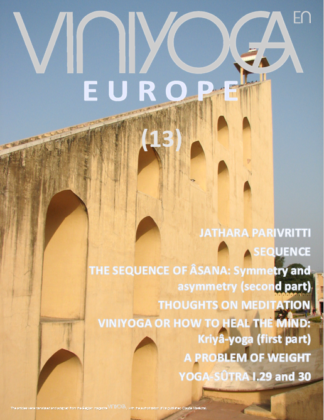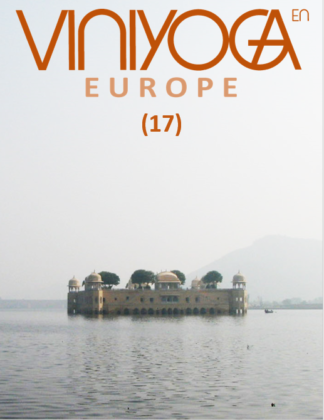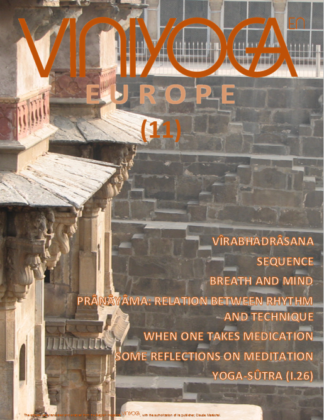Description
(35 pages)
VÎRABHADRÂSANA
Some yoga postures represent a specific idea or action. Vîrabhadrâsana is one of them. It deserves a special place in the technique of yogâsana because of its name and its effects on the muscles, breath and psyche of the practitioner.
By Claude Maréchal
SEQUENCE
In this sequence we analyze vîrabhadrâsana. This is a very short sequence; it ends with a lying down counter posture and prânâyâma.
By Claude Maréchal
BREATH AND MIND
Breathing is a vital function that doesn’t stop. But most of the time we don’t give it much importance. However the way we breathe can give us precious indications about our mood and it can even alter it in the way we wish.
By T.K.V. Desikachar
PRÂNÂYÂMA: RELATION BETWEEN RHYTHM AND TECHNIQUE
Most of the basic techniques of prânâyâma combine ujjâyî with breathing through alternate nostrils. We are going to recall the characteristics of these two ways of breathing. The choice of a given technique and rhythm depends on the possibilities of the practitioner and aims to answer his/her particular needs.
So we define which technique is good for a practitioner according to his/her breathing capacity and objective. The desired rhythm determines the choice of the technique, not otherwise.
This article is a general theoretical presentation of this subject. Another article will propose different applications and will show how to progress in the practice of prânâyâma.
By Claude Maréchal with the collaboration of Sylviane Gianina
WHEN ONE TAKES MEDICATION
When someone ill practices yoga, this person needs to be constantly watched.
By T.K.V. Desikachar
SOME REFLECTIONS ON MEDITATION
Desikachar shared some reflections on meditation in a seminar.
By T.K.V. Desikachar
YOGA-SÛTRA (I.26)
In all great traditions, the notion of “master” or guru has a capital role. In yoga, the primordial guru is Îshvara.
Comments by Professor T. Krishnamacharya; presentation and explanations by T.K.V. Desikachar





